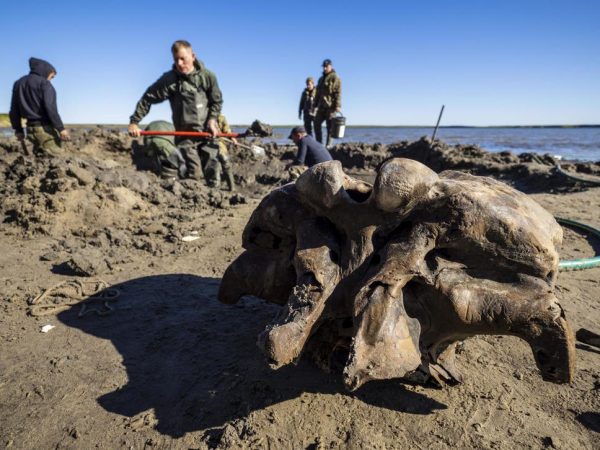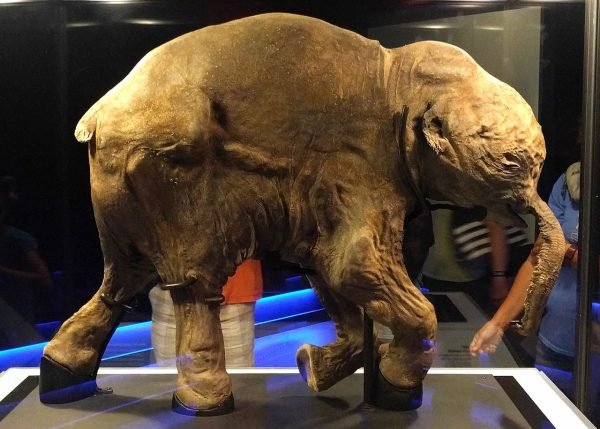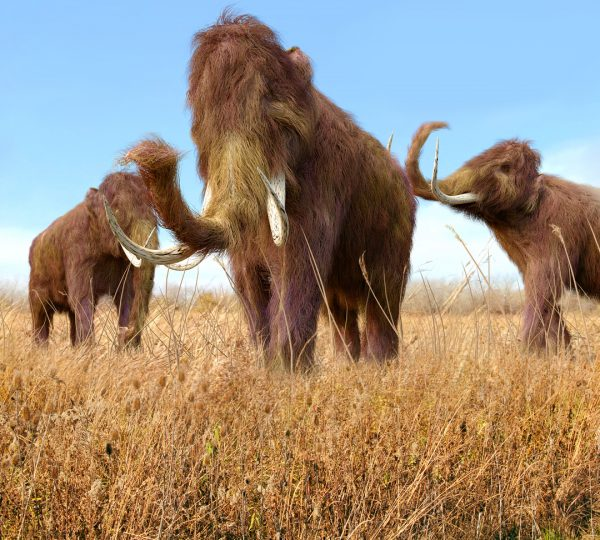Intact Skin And Sinew Found On A Woolly Mammoth Carcass In Russia
Recently, Russian reindeer herders stumbled across the remains of an extinct ten thousand year old woolly mammoth in the shallow waters of Pechevalavato Lake on the Yamalo-Nenets region of Northern Russia.
The body parts found were part of the animal’s skull, the lower jaw, several ribs and a foot fragment with the soft sinews still intact. Russian scientists rushed to the location in hopes of finding the rest of the skeleton and have found about ninety percent of the bones, some with skin still attached and even excrement from the giant animal and are still digging for more.

The mammoth appeared to be young, about fifteen to twenty years old and about ten feet tall. Andrey Gusev from the Centre of Arctic Research remarked, “We assumed that the bones were preserved in the anatomical order but the first and the second days of our expedition showed that it was true only about the back part of the skeleton.”
https://www.youtube.com/watch?v=xLI980fr2K0
The guardian.com tells us that Evgenia Khozyainova from the Shemanovsky Museum in Salekhard, said “We have one front and one hind foot well-preserved, with tendons, soft tissues and pieces of skin. Also, we have sacrum with adjacent vertebrae, including the tail preserved with tendons and a big piece of skin.”

The scientists are hoping the excrement will show what the beast’s diet was and how environmental change affected them.
Woolly, or Siberian, mammoth bones have been found dating back to thirty thousand years ago, according to washingtonpost.com but finding a complete skeleton is rare. Genetically related to elephants, the Siberian mammoth’s bones are the most commonly found in the permafrost of Siberia.
The ivory tusks were once so plentiful the Siberians exported them to China and Europe for hundreds of years. It is believed mammoths went extinct about seven thousand years ago except for a small population on Wrangel Island, an Arctic island located off the coast of northern Russia, as late as four thousand years ago before surrendering to extinction.
The small population’s DNA suffered from inbreeding and lack of genetic diversity causing susceptibility to dwarfism, disease and defects in their development. Researchers believe that rising sea levels trapped a group of mammoths on the island dooming them to inter-breed.

With climate change more and more carcasses of animals are appearing in the melting permafrost. In 2018 a Siberian puppy was found in a cave that was almost perfectly preserved for eighteen thousand years with his fur and skin still intact.
In May of 2013 scientists from the Siberian Northeastern Federal University were advised that mammoth tusks were sticking out of the permafrost on Maly Lyakhovsky Island in northern Siberia.
After arriving at the site, they discovered such an extremely well preserved mammoth that when it was moved from the site liquid blood came from the carcass. An autopsy was performed as the animal thawed and revealed it had lived about forty thousand years ago and was eaten by predators after becoming stuck in a peat bog.
Some scientists such as Insung Hwang of SOOAM Biotech Research Center in South Korea, are attempting to clone a woolly mammoth but have been unable to find a complete genome with which the work can begin.
Not all mammoth bones are found in the permafrost of Siberia. According to detroitnews.com, a soybean farmer in Michigan about ten miles from Ann Arbor, James Bristle, found bones and believed it was an old fence post sticking out of the ground but discovered it was about twenty percent of the skeletal remains of a mammoth from about fifteen thousand years ago.
Another Article From Us: Over 350 Elephants Mysteriously Drop Dead
There were plentiful signs of human activity and marks on the bones led scientists to believe the creature was felled for food. Professor Dan Fisher of the Museum of Paleontology at the University of Michigan claims that as many as three hundred mastodons and thirty mammoth remains have been found in Michigan.





